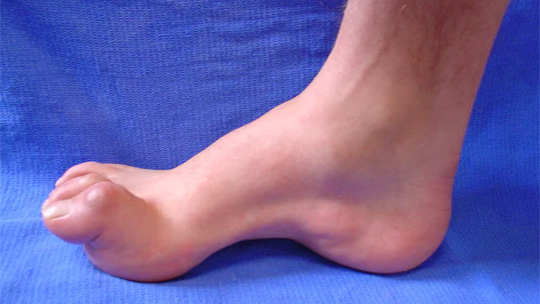CMT Hereditary Motor and Sensory Neuropathy
CMT stands for Charcot-Marie-Tooth and is also known as Hereditary Motor and Sensory Neuropathy. This hereditary disease affects the muscles in your feet due to nerve damage. CMT causes loss of sensation in your feet as well as loss of muscle. Your feet lose muscle mass and definition because the nerves are not sending or receiving information from the brain due to nerve damage. Tripping and balance issues are common complaints from those who have this condition.
CMT is named after three scientists: Jean-Martin Charcot, Pierre Marie, and Howard Henry Tooth.
WHAT CAUSES CMT HEREDITARY MOTOR AND SENSORY NEUROPATHY?
CMT is generally caused by genetics.
HOW DO I KNOW IF I HAVE CMT HEREDITARY MOTOR AND SENSORY NEUROPATHY?
WHAT ARE THE SYMPTOMS OF CMT HEREDITARY MOTOR AND SENSORY NEUROPATHY?
Symptoms of CMT can include:
- Drop Foot
- Claw Toe
- Hammer Toe
- High Arches
- Pain
- Muscle Weakness
- Numbness in the feet
- Decrease in muscle tissue
- Loss of balance
HOW IS CMT HEREDITARY MOTOR AND SENSORY NEUROPATHY DIAGNOSED?
CMT can be diagnosed by visiting a neurologist. The neurologist will perform a physical exam, focusing on the legs and feet of the patient. The neurologist may also order a DNA test to examine genetic markers. In some cases the neurologist will test your nerves using electrodes.
WHAT CAN I DO FROM HOME FOR CMT HEREDITARY MOTOR AND SENSORY NEUROPATHY?
WHAT CAN I DO TO PREVENT CMT HEREDITARY MOTOR AND SENSORY NEUROPATHY?
CMT is a genetic disorder so there is no way to prevent it.
WHAT TREATMENTS CAN I DO FROM HOME FOR CMT HEREDITARY MOTOR AND SENSORY NEUROPATHY?
You can manage your CMT from home by taking care of your feet. This includes:
- Making sure your shoes fit properly. This means they aren’t too tight or causing blisters.
- Checking your feet on a daily basis for calluses, blisters, and dry patches
- Taking care of your nails by watching out for other conditions such as an Ingrown Toenail
- Removing obstacles from your walking paths at home such as rugs, cords, and wires. This will help cut down on your chances of tripping.
- Participating in exercises and stretches that help maintain your foot’s range of motion
WHEN SHOULD I SEE A DOCTOR FOR CMT HEREDITARY MOTOR AND SENSORY NEUROPATHY?
You should see a doctor as soon as you suspect that you have CMT. This condition will worsen over time. Learning to manage this disease is vitally important.
TREATMENTS YOUR DOCTOR MAY RECOMMEND FOR CMT HEREDITARY MOTOR AND SENSORY NEUROPATHY
Non-Surgical:
The most common non-surgical treatments for CMT are as follows:
- Physical therapy. This helps to preserve and maintain muscle movement and strength.
- Wearing proper footwear, including shoes with proper arch support and/or foot braces. This will give your foot and leg the stability it lacks.
- Low-impact exercises. Low impact exercises are one way to manage your CMT. These types of exercises include swimming and biking
Surgical:
Foot fusion surgery. This surgery will stabilize your foot and ankle joints but not bring back sensation to your foot.

